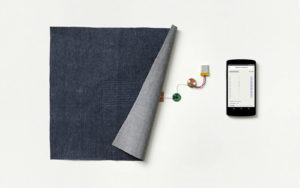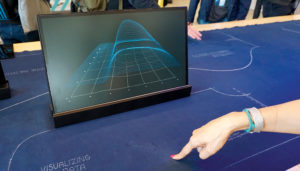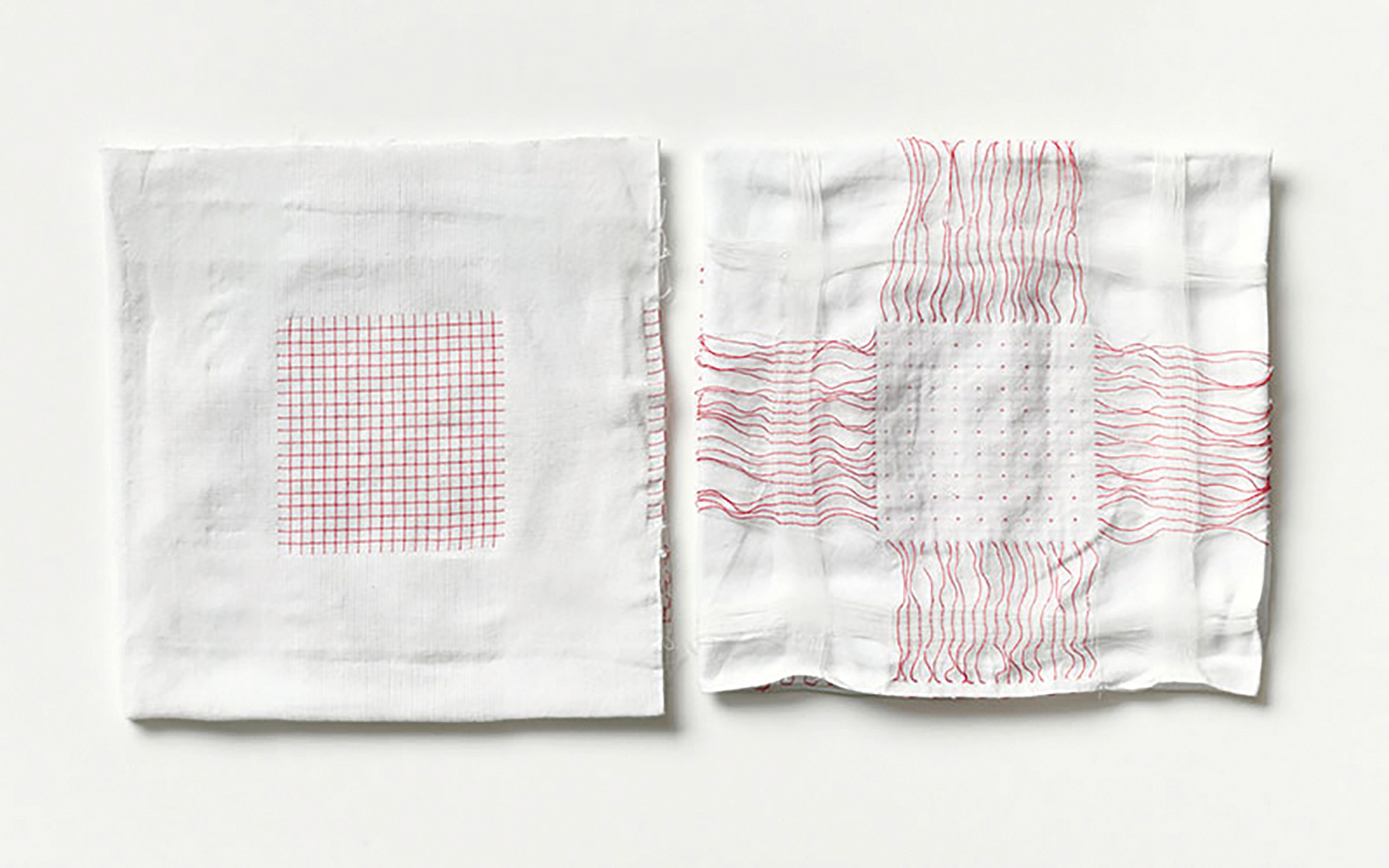Technology is now working its magic on fashion by making clothes a control unit for our electronic devices. With smart clothing, you can now make calls by an easy swipe on your jacket cuff
The changes in textiles and fashion have many times, been seen as a reflection of the advancement made through the years. Dutch trend forecaster, Li Edelkoort, has extensively spoken about this. Textiles, like any other object of utility, leave behind footprints that can easily be traced to understand more about their evolution. From denim that marked the beginning of the industrial revolution to khadi, that became a symbol of the Indian independence struggle with the Swadeshi movement, textile materials and motifs tell us a lot about how we have come this far.
Societal and economic factors have played a role in bringing us to the current type of textiles from the first textile that was made from dyed flax fibres back in 34,000 BCE. Nowadays, there are mill-made fabrics that quite evidently show the progress that has been made in terms of the design and strength of mass-produced goods. However, the hand-woven textiles are still prevalent for their sheer beauty in imperfection.
Textiles have lent their structure to be used as raw materials in the construction of buildings and computer hardware. More recently, as LED screens that glow and can be worn or kept as a carpet, paving the way for a generation of intelligent objects to outsmart our phones and TVs.
As the world moves towards adopting all things smart and an increase in the relevance of textiles, Google’s Advanced Technology and Projects (ATAP) team are working hard at pushing their touch-sensitive textiles in the mainstream.

Known by the name of Project Jacquard, under Dr Ivan Poupyrev’s guidance, this technology uses conductive yarns woven into everyday fabrics, using existing manufacturing techniques. With an addition of some hardware, this fabric becomes sensitive to touch and can become a controlling unit for our personal devices. You know, the same gestures like swipe left, right, up, down, tap and hold but on a piece of fabric that is as good as the one your regular shirt is made of.
These yarns are made in collaboration with craftsmen in Japan who make cords for the traditional kimonos. Its braided structure is what inspired Jacquard’s yarns that hold conductive alloy wires inside the insulation of natural or synthetic fibres. These yarns can be woven with any materials using the existing manufacturing processes. Google further worked with fashion designers and mills in Japan to bring this textile to life.
It is no surprise that an invention like this comes from a place that is known for its playful and innovative application of technology and fashion. A place that has given birth to talents like Issey Miyake, who fused industrial science with garments seamlessly, to Yohji Yamamoto and Rei Kawakubo who are each an epitome when it comes to the most radical ideas on fashion.
As someone who has gone to fashion school, it is extremely inspiring to learn Google’s intentions for a project like this, which will create a platform for brands around the world to create smart clothing tailored for their sensibilities as unique enterprises. Initiatives like these make World Economic Forum’s prediction of 10 per cent people wearing smart clothing by the year 2025, sound less funny.
The tech giant’s collaboration with Levi’s on a smart denim jacket that can control various functions on one’s phone, using Jacquard’s technology, is a way Google wants the world to see the future of apparel and everything it is doing to make fantastical clothes a reality. These jackets are available for $350 at Levi’s stores across the US.
Although it is not the first time someone tried to create apparel like that, in 1998, Margaret Orth at MIT media labs developed a jacket that played musical notes on touching the stainless steel embroidery on the jacket’s fabric. Various artists have experimented with conductive yarns embedded on a textile, leading to certain visual and audio-based outputs.
However, the idea behind Google’s dive into this technology is to pull this idea outside the walls of an innovation lab and enable more people with seamless computing. To ensure that, it has developed the yarn in a way that it is part of the hard-hitting ways of the existing textile manufacturing processes.

Google’s intention with this technology is a difficult guess. It already knows a lot about us and machine learning has allowed it more details into the lives of individuals that are in its proximity. Perhaps, it is a bot’s idea to make a textile-like that. Imagine the kind of expanse Google will get to study: our clothes, our sofa, or pillow, our curtains and even our teddy are a few things Google looks forward to integrating this technology with, as mentioned in its paper.
The technology that was introduced in 2015, announced an association with Levi’s in 2016 that started retailing smart jackets made in denim in 2018. Designed for bicycles, this jacket is capable of controlling some basic functions in one’s phone. From making calls to finding ETA and directions to the destination, all with an easy swipe on the jacket’s cuff as one holds the bicycle with the other hand. The video that describes the making of this jacket features locations that are suggestive of its manufacturing that took place in Gujarat, something the collaborators have not been vocal about.
Google is currently accepting proposals for an artist’s residency at its cultural lab in Paris, for creatives who can use Jacquard’s resources in a project that combines tech and fashion in an innovative style. Pamela Golbin, who served as a curator in Paris’s Musée de la Mode et du Textile (textile museum) for 25 years, now an artistic director for this technology at Google’s ATAP, has curated the residency that will give three artists a chance to develop their projects under her mentorship and others from Google’s Lab.
So, can you visualise Jacquard becoming a part of your life?





